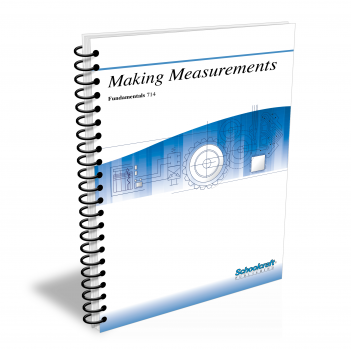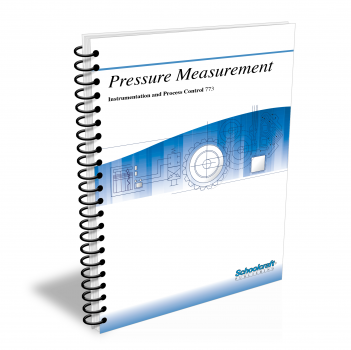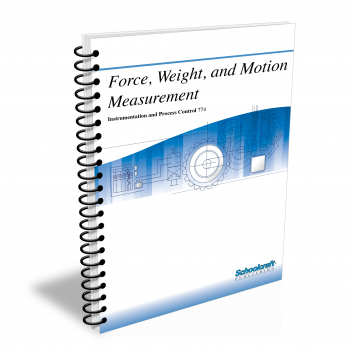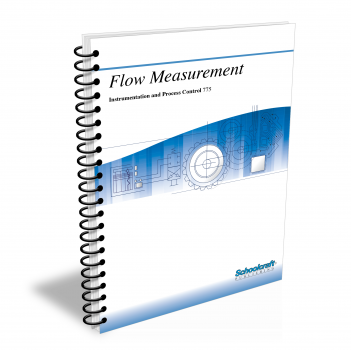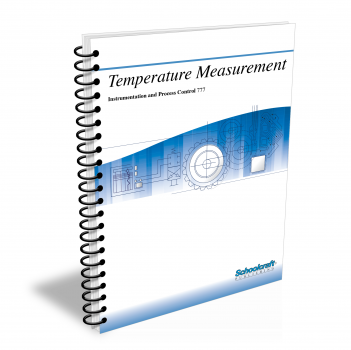Level Measurement
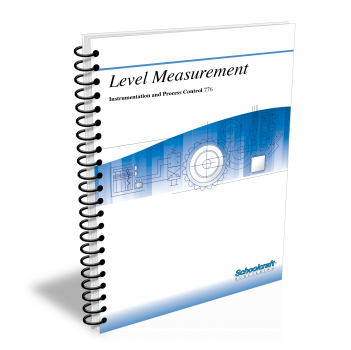
Course Number: 776
The Level Measurement textbook discusses the principles governing various methods of measuring level. It explains the operation of conductive, capacitive, resistive, ultrasonic, and photoelectric devices. It compares the operation of several kinds of pressure-head instruments. It explains the measurement of solids by ultrasonic, microwave, radiation, and other methods. It concludes with a discussion of several special-application devices for both continuous and point level measurement
Does your curriculum require additional topics not included in this textbook? Build a customized version of the Level Measurement textbook below.
This textbook has been recently updated
to include topics lists, objectives, & key terms for every chapter.
Recommended Contact Hours – 8
Preview a Chapter
Available Supporting Material
- Table of Contents
- Exam Copies
- Suggested Titles
Table of Contents
Chapter 1: Principles of Level Measurement
Topics: Surface-sensing and storage tank gauges; Sight glasses; Magnetic and displacer gauges; Buoyancy; Level, mercury, and magnetic reed switches; Switches with multiple displacers
Learning Objectives:
- Define datum point, and contrast direct and indirect level measurement.
- Describe the main kinds of surface-sensing gauges.
- Define buoyant force and explain how it is used in displacer gauges to measure liquid level.
- Describe maintenance procedures for float devices, displacer gauges, and sight glasses.
- Compare the use of sight glasses, mercury level switches, and magnetic reed switches.
Chapter 2: Electrical Instruments
Topics: Conductivity and liquid level; Capacitance probes; Zero and span adjustments; Ultrasonic, resistance, and photoelectric level detectors
Learning Objectives:
- Differentiate between continuous and point level measurements, and between direct and indirect level measurement.
- Describe the operation of a conductance probe in a conducting liquid.
- Describe the operation of a capacitance probe in a dielectric liquid.
- Explain the operation of ultrasonic, resistance, and photoelectric level sensors.
- Describe conductance point level probes, capacitance point level probes, and ultrasonic point level detectors.
Chapter 3: Pressure Head Instruments
Topics: Hydrostatic pressure; Relative density; Pressurized fluids; Air bellows; Air/liquid purge systems; Force-balance diaphragm system
Learning Objectives:
- Define hydrostatic pressure and explain how it is calculated by means of the relative density (specific gravity) of a liquid in a tank.
- Discuss the relationship between pressure head and the location of the pressure (level) indicator.
- Compare the air bellows and air purge systems and discuss advantages for each.
- Explain how a force-balance diaphragm system works.
- Describe the operation of a differential pressure transmitter and explain how it is used to measure level and density.
Chapter 4: Solid Level Measurement
Topics: Weight method; Ultrasonic, microwave, and radiation level detectors; Capacitance and resistance probes; Bob-and-cable tension method
Learning Objectives:
- List the data needed to compute the level of a bulk solid in a bin.
- Describe and compare the operation of wire strain gauges and semiconductor strain gauges.
- Compare the advantages and disadvantages of ultrasonic and microwave level measuring methods.
- Discuss the operation of capacitance probes, resistance probes, and bob-and-cable units in measuring bulk solids.
- Describe how diaphragm switches and tilt switches are used for point level detection in automatic bin fillers.
- Discuss the use of rotating paddle detectors in controlling level within a band.
Chapter 5: Other Level Measurement Instruments
Topics: Radiation level detectors; Ionization, semiconductor, and photoelectric radiation sensors; Infrared detectors; Interface levels
Learning Objectives:
- Explain how radiation level detectors are used for both continuous and point level measurement.
- Describe the operation of ionization radiation sensors, semiconductor radiation sensors, and scintillation counters.
- Discuss the operation of an infrared point level detector.
- Describe several methods of measuring interface levels.
- Explain how range suppression and range elevation are used.
- Discuss the important considerations in equipment selection.
Request Exam Copies
Exam Copies
Ready to see a copy of our textbooks? After selecting which textbooks you’d like to review for your course, you can submit your request by either logging in or creating an account so we know where to ship your exam copies. A representative from Schoolcraft will contact you to confirm and finish processing your request.
Exam copies are always free and yours to keep.
Selected Exam Copies
none selected
* Maximum of five copies can be ordered
